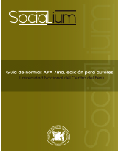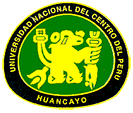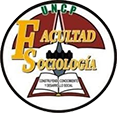Attitudes towards quechua in the students of Communication Sciences from the Universidad Nacional del Centro del Perú
DOI:
https://doi.org/10.26490/uncp.sl.2017.1.1.539Keywords:
attitude, quechua, discriminationAbstract
The article addresses the attitude university students have towards quechua. The research conducted was of basic type, descriptive level and cross-sectional design (2017); it had as objective to determine the acceptance, indifference (neutrality) or rejection towards quechua, a native and official language of the Peruvian State. It was used as a tool a survey of 26 questions with a Likert scale adapted from Aliaga (2012) that evaluates the cognitive, affective and reactive dimensions through positive and negative questions that give us a score to determine what the student's attitude is. The validity of the instrument was determined by expert judgment through Aiken’s V coefficient, which got a value of 0.75, and its reliability, through the Cronbach’s alpha, which yielded 0.68. The population was constituted by 390 students, from which, by simple stratified sampling, it was obtained a sample of 180 students, 74 male and 106 female. The study concludes that the students from the faculty of Communication Sciences from the Universidad Nacional del Centro del Perú predominantly (53.89 %) have a positive attitude towards quechua; the neutral attitude reached 26.67 %, and the negative one, 19.44 %. In addition, the highest incidence of the positive attitude occurs in women (57.55 %), compared to men (48.65 %); the neutral attitude is similar in women (26.42 %) and men (27.03 %); while the negative attitude presents a higher rate in men (24.32 %) than in women (16.04 %).
References
El Comercio. (6 de noviembre de 2010). El quechua muere de vergüenza en el Perú. Recuperado de https://archivo.elcomercio.pe/amp/sociedad/lima/quechua-muere-verguenza-peru-noticia-665065
Godenzzi, J. (2005). En las redes del lenguaje. Cognición, discurso y sociedad en los Andes. Lima: Universidad del Pacífico.
Gonzáles, D. (2014). Un estudio de actitudes hacia el quechua del este de Apurímac. Electronic Survey Report 2014-001- SIL International. Recuperado de https://www.sil.org/system/files/reapdata/10/37/75/10377547131387185083871792942784720251/silesr2014_001.pdf
Herzfeld, A. (2008). ¿El castellano, el quechua o el inglés? El porqué de la actitud de los estudiantes peruanos hacia estos idiomas. Tinkuy: Boletín de investigación y debate, 9¸ 83-107. Recuperado de https://dialnet.unirioja.es/servlet/articulo?codigo=3303640
Huañec, Y. (2003). Desconocimiento por parte de los medios de comunicación de la realidad lingüística y educativa del Perú rural. XIV Congreso Internacional de ASELE. Burgos
Molina, T. (2012). La interacción castellano-quechua: hacia una comprensión lingüística, ideológica y cultural del fenómeno de “imposición” del castellano del Perú (Tesis de maestría). Concordia University, Montreal, Quebec, Canadá.
Ochoa, L. (editora). (2012). Instrumentos de investigación científica. Huancayo: Soluciones Gráficas S. A. C.
RPP Noticas. (28 de junio de 2013). ¿El quechua es o no es una lengua discriminada? Recuperado de https://rpp.pe/lima/actualidad/el-quechua-es-o-no-es-una-lengua-discriminada-noticia-608686
Skrobot, K. (2014). Las políticas lingüísticas y las actitudes hacia las lenguas indígenas en las escuelas de México (Tesis doctoral). Universidad de Barcelona, España.
Yarlequé, L., y Vila, R. (2004). Teoría y metodología de la investigación. Huancayo: SBH.








.jpg)















